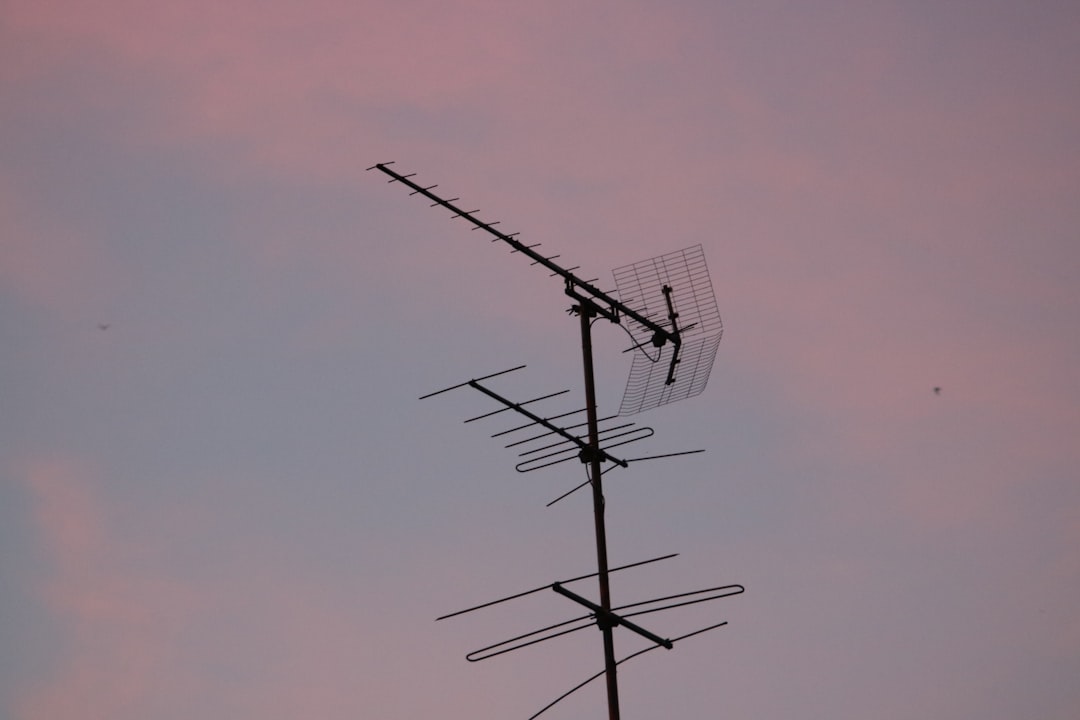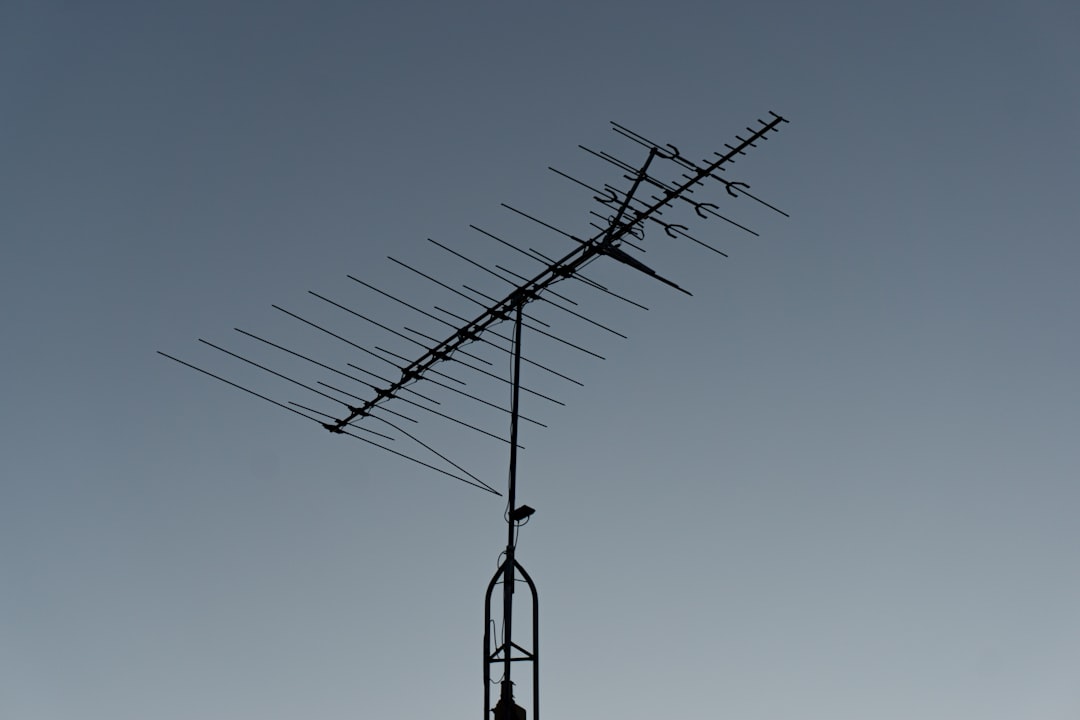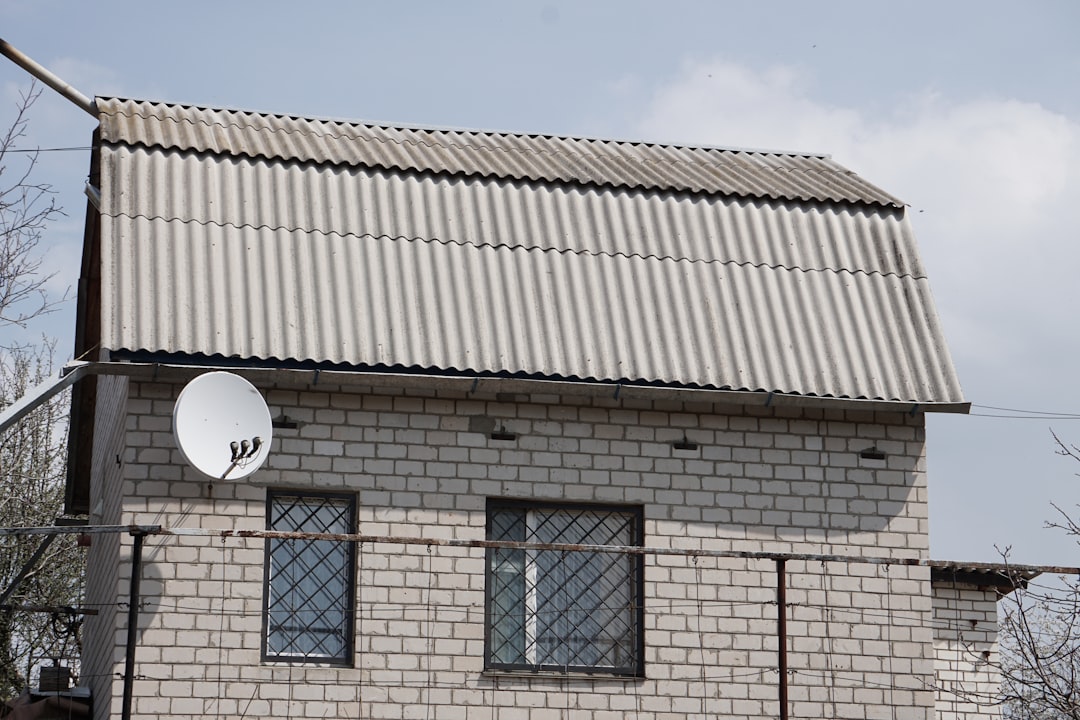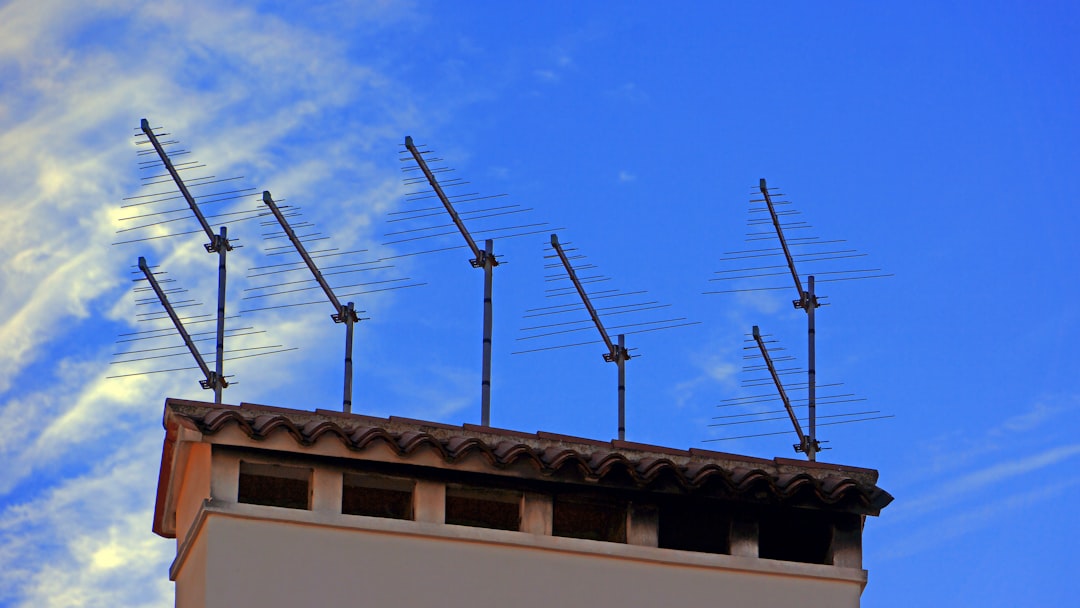

Engage prospects with a scan and streamline customer engagement with FREE QR code marketing tools by Sona – no strings attached!
Create a Free QR CodeFree consultation

No commitment

Engage prospects with a scan and streamline customer engagement with FREE QR code marketing tools by Sona – no strings attached!
Create a Free QR CodeFree consultation

No commitment
Microwave communications companies are at the core of modern wireless infrastructure, supporting telecom backbones, essential data transmission, and high-capacity connectivity for industries like utilities, energy, transportation, and public safety. As demand for secure and scalable microwave network solutions grows, firms need better ways to attract enterprise buyers, demonstrate technical credibility, and maintain customer engagement across long and complex sales cycles.
Yet many organizations still rely on paper-based materials and manual processes that create gaps in measurement and follow up. At trade shows, job sites, or during vendor evaluations, valuable interactions are often lost because they are not connected to digital systems. QR codes offer a simple, proven bridge between the physical world and digital engagement. With intentional deployment, they turn every printed asset, device label, and event touchpoint into a measurable entry point, enabling account-level attribution, faster handoffs, and higher return on marketing and sales investments.

Microwave communications firms frequently encounter friction where analog processes dominate. Think of a trade show conversation that ends with a business card exchange but never makes it into the CRM, or a field engineer carrying outdated spec sheets on a site visit. QR codes transform these analog pain points by replacing static materials with dynamic, trackable interactions that connect directly to the buyer journey. The result is more reliable capture of intent, more consistent follow up, and less time spent on manual data entry.
QR-enabled workflows meet prospects and customers where they are. Instead of asking a booth visitor to type a URL or an operations manager to call a hotline, one scan routes them to the most relevant digital experience for their context. This reduces friction and surfaces data that helps your teams prioritize the right accounts. To get started, focus on the highest value offline moments and rebuild them with QR at the center.
To make this work reliably across your organization, plan for both placement and governance.
When deployed intentionally, QR campaigns create a closed-loop path from first scan to CRM lead. They compress the time from interest to action, reduce manual work for sales and support teams, and make every dollar spent on physical marketing accountable.
Microwave communications buyers expect speed, technical depth, and relevance in every interaction. Long sales cycles, distributed stakeholders, and complex specifications often mean engagement starts offline, then struggles to move into a trackable digital flow. QR codes bridge that gap, turning moments like browsing a booth, walking a site, or installing hardware into measurable, digital actions that sales and operations can act on.
These companies typically market through brochures, trade shows, direct mail to operators, and equipment shipments. Without a direct link to digital experiences, prospects are left to type URLs or search for documentation, which slows momentum and hides intent signals. QR codes solve this by creating a one-scan route to the exact action you want: request a quote, book a demo, view RF planning tools, or open a warranty claim.
By aligning each QR destination with the scanner’s context, microwave communications companies gain clarity on who is engaging, where interest originates, and which assets move buyers forward. That insight guides smarter investments in events, content, and enablement, improving both marketing performance and customer experience.

The technical nature of microwave deployments requires QR formats that handle complex workflows and rapidly evolving information. The right format depends on the intent you want to capture, such as lead generation, device support, or training. Dynamic codes offer the most flexibility because you can update the destination and enrich analytics without reprinting.
For most revenue and support scenarios, choose dynamic QR codes so you can refresh destinations as your assets evolve. Use static codes for unchanging resources like a fixed hotline or a permanent facility map. With Sona QR, teams manage formats in one platform, apply consistent branding, and maintain a single source of truth for all codes deployed across regions and teams.

Growth in this sector often hinges on capturing interest at precise moments: when a network upgrade is being evaluated, when a pilot is underway, or when a service call reveals a broader need. QR codes excel in high-touch, physical environments where attribution has historically been difficult. By instrumenting your top offline touchpoints, you transform them into measurable demand drivers.
Start by mapping your physical marketing and operations landscape, then align QR placements to natural behaviors. Look for surfaces and moments where decision makers pause, ask questions, or need information. This is where a targeted call to action can direct them to the next best step.
By deploying QR codes in these contexts, you will close the loop on previously invisible touchpoints. You will know which channels spark the most qualified actions, then scale the placements that fuel pipeline.

QR codes are not just shortcuts, they are structured onramps to the right digital action given the buyer’s or user’s context. In microwave communications, the most effective use cases directly address long sales cycles, complex specifications, and mission-critical support needs.
Each use case should be paired with a clear success metric, such as demo requests booked, support resolution time, or training completion. Over time, use analytics to prioritize the use cases that most predict revenue or retention.
Every scan communicates intent: what the person wants, where they are, and what they might need next. By deploying multiple QR codes across your marketing and operations landscape, you can segment audiences automatically and tailor follow up across channels. This is especially valuable in account-based motions where buying groups include engineers, procurement, and executives with different interests. For strategy on reading these signals, see Sona’s blog post Essential Guide to Intent Data.
Start by aligning QR codes to your funnel stages and buyer personas. Awareness scans at a public event should lead to educational content, while consideration scans on a spec sheet should lead to technical deep dives and pricing. Conversion-focused scans on a proposal should open a meeting scheduler or procurement form. Tag each code with journey stage and persona so segments build themselves as scans accumulate.
For microwave communications specifically, segment audiences like network operators versus system integrators, public sector agencies versus private enterprises, and field technicians versus IT decision makers. Then tailor the next-best action for each segment based on their scan path.
QR codes connect your physical footprint to your digital engine, ensuring every brochure, booth, or box drives measurable engagement. In a category where buyers research across channels and devices over weeks or months, QR creates continuity, moves people to the next step, and adds data to every analog asset.
To realize the full benefit, align code destinations with the purpose of each channel. A brochure should link to deep-dive resources, while a booth banner should link to demo booking. Then centralize code management to ensure consistency of branding, CTAs, and analytics. With Sona QR, marketing and operations teams can share a single library of codes, see performance in one dashboard, and sync insights into the CRM and ad platforms.
QR codes serve as the offline onramp and the data layer across your multi-channel mix. When every scan flows into a unified analytics and CRM stack, you replace guesswork with real signals from your highest value audiences.
Launching a QR program that actually drives revenue requires more than printing a few codes. It demands clarity on goals, thoughtful design, careful placement, and disciplined optimization. Use the following steps as a repeatable playbook for demand generation, field enablement, and support scenarios.
Define the primary business outcome and select the highest leverage context for deployment. For example, enable CRM-tracked demo bookings at an industry summit or accelerate RMAs by placing QR codes on return packaging. Be specific about the action you want and the audience you are targeting.
Your goal determines the format and whether you need dynamic capabilities. For most marketing and support use cases, dynamic codes are preferred because they unlock editing, tracking, and retargeting.
A QR code is a tiny interface. Design it like one. Make the destination clear, the benefit obvious, and the scanning experience effortless.
Place each code where the target audience will naturally see it and want to take the intended action. Roll out in phases, starting with your highest impact placements.
Measurement turns one-off deployments into a compounding growth engine. Use analytics to refine creative, placements, and destinations every cycle.
A crisp process ensures each campaign learns from the last. Over time, your QR program will evolve from a tactical tool to a strategic part of your marketing and operations playbook.
Proving which offline initiatives drive results is critical in a complex B2B sale. Without connected analytics, teams may celebrate impressions while missing the question that matters: did this channel create pipeline or accelerate revenue? For broader strategy, see Sona’s offline attribution guide. QR analytics make physical marketing measurable, then platforms like Sona QR and Sona, an AI-powered marketing platform that turns first-party data into revenue through automated attribution, data activation, and workflow orchestration, carry the insight into attribution and sales action.
Instrument each QR code so you can see not only who scanned and when, but also what happened after. Combine scan logs with form fills, meeting bookings, support tickets, and opportunity data. The more your system ties scans to identities and accounts, the more confidently you can attribute revenue to specific materials, shows, and placements.
Benchmarks vary, but microwave communications firms often see 15 to 30 percent scan-to-form conversion at events and double-digit increases in demo bookings when booth signage is instrumented. In support scenarios, context-rich QR intake can reduce time to resolution by 20 percent or more. Establish your own baselines and improve steadily through testing.
Once the first wave of codes is live, expand impact by improving attribution, automating follow up, and teaching teams to use QR as a shared muscle. The most successful programs feel seamless to the buyer and operationally invisible to field teams, yet generate a steady stream of actionable data.
Invest in simple enablement and consistent creative. The clearer the promise near the code, the higher the scan rate. The more unified your data flows, the faster your revenue teams can prioritize accounts and respond with relevance.
Replicate what works across regions, partners, and product lines. This compounding approach turns isolated wins into a system for long-term growth.

Stories from the field show how small changes at physical touchpoints create measurable outcomes. Use these to brainstorm your next test and to inspire your teams to think beyond brochures. For more, browse real-world QR examples.
What unites these examples is a clear value promise near the code and an integrated back end. Scans did not disappear into a generic landing page, they routed to an action that benefited the scanner and the business simultaneously.
QR programs succeed when strategy, creative, and operations align. A great-looking code that sends people to a generic homepage will underperform. Conversely, a simple black-and-white code near a clear benefit can drive excellent results if it routes to a frictionless action that matches the scanner’s intent.
Avoid pitfalls that degrade trust or reduce scan rates. Codes that are too small, placed too high, or lack clear CTAs often go unnoticed. Codes that open heavy PDFs on mobile frustrate users. Codes that change destinations without context can confuse teams and buyers. Plan for the environment, the device, and the person holding it.
QR codes give microwave communications companies a modern toolkit for linking physical assets, events, and documentation to the digital buyer journey. By embedding QR campaigns at every step, from converting unknown visitors into CRM leads to capturing support signals at the point of need, firms solve legacy challenges and enable consistent follow up. When every scan carries context, teams understand who is engaged and what they want next.
With the right plan, design, and analytics, QR codes can turn every touchpoint into a measurable growth opportunity. Use a platform like Sona QR to generate dynamic codes, manage destinations, and analyze performance, and Sona.com to connect scan engagement to identity, attribution, and revenue. Start creating QR codes for free.
QR codes have transformed microwave communications companies from traditional, manual processes into dynamic, measurable channels for operational efficiency and client engagement. Whether it’s streamlining equipment access, enhancing field service workflows, or enabling seamless data sharing, QR codes replace cumbersome documentation with instant, mobile-friendly actions—capturing real-time interaction data to optimize network management and customer satisfaction.
Imagine instantly verifying equipment status or granting secure access with a simple scan, reducing downtime and accelerating service delivery. With Sona QR, you can create dynamic, trackable QR codes in seconds, update permissions or information without reprinting, and connect every scan directly to actionable insights. No wasted time, no missed alerts—just smarter, more responsive operations.
Start for free with Sona QR today and turn every scan into faster service, improved security, and stronger client relationships.
Microwave communications companies provide wireless infrastructure supporting telecom backbones, data transmission, and high-capacity connectivity for industries like utilities, energy, transportation, and public safety.
They use QR codes on printed materials, devices, and event touchpoints to create trackable, digital interactions that connect prospects and customers to relevant content, demos, support forms, and training, improving follow-up and reducing manual processes.
Services include instant demo booking, access to live specs and documentation, context-rich support requests, on-site safety and compliance resources, and training and certification tracking via QR codes.
They achieve faster lead capture, improved customer engagement, better compliance tracking, reduced support resolution times, cost efficiency by replacing printed materials, and enhanced data-driven marketing and sales attribution.
QR codes have transformed static analog processes into dynamic, measurable digital workflows that enable seamless offline to online continuity, real-time analytics, automated follow-up, and multi-channel marketing integration.
Common formats include web links for landing pages, vCards for contact sharing, forms for service requests, SMS or email for support, Wi-Fi access codes, and app download links, with dynamic codes preferred for flexibility.
Effective placements include trade show booths, equipment packaging, installation sites, technical site visits, direct mail campaigns, out-of-home advertising, and digital signage in facilities.
By assigning unique QR codes aligned to buyer personas and funnel stages, tagging scans by role and intent, segmenting by location and timing, syncing data to CRM and ad platforms, and modeling intent through repeat scans.
Best practices include branding codes with logos and clear CTAs, sizing codes for the environment, testing across devices and lighting, placing codes in natural lines of sight, and centralizing management on a platform like Sona QR.
They track scans with time, device, and location data, measure engagement by channel, respond in real time to high-value scans, sync data with CRM systems, and use multi-touch attribution to connect scans to revenue.
Avoid vague CTAs, poor placement, small or low-contrast codes, linking to heavy PDFs without mobile optimization, changing destinations without notice, and stopping measurement at scan counts instead of tracking conversions.
By using unique codes per asset and placement, adding standardized UTM parameters, automating follow-up workflows, educating staff to promote scanning, and replicating successful strategies across regions and partners.
Use Sona QR's trackable codes to improve customer acquisition and engagement today.
Create Your FREE Trackable QR Code in SecondsJoin results-focused teams combining Sona Platform automation with advanced Google Ads strategies to scale lead generation

Connect your existing CRM

Free Account Enrichment

No setup fees
No commitment required

Free consultation

Get a custom Google Ads roadmap for your business






Launch campaigns that generate qualified leads in 30 days or less.
